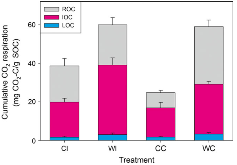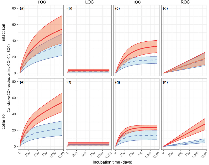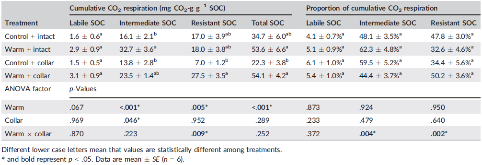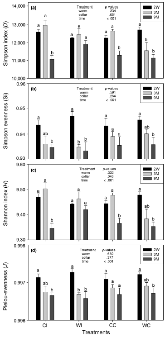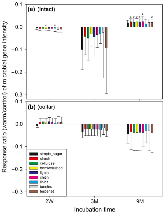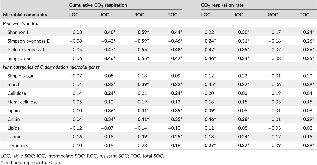Enhanced decomposition of stable soil organic carbon and microbial catabolic potentials by long-term field warming
- Chinese Academy of Agricultural Sciences, Beijing (China); Univ. of Oklahoma, Norman, OK (United States)
- Univ. of Oklahoma, Norman, OK (United States); Oak Ridge National Lab. (ORNL), Oak Ridge, TN (United States)
- Univ. of Oklahoma, Norman, OK (United States)
- Center for Ecological and Environmental Sciences, Northwestern Polytechnical University, Xi'an China
- Chinese Academy of Agricultural Sciences, Beijing (China)
- Univ. of Florida, Gainesville, FL (United States)
- Northern Arizona Univ., Flagstaff, AZ (United States)
Quantifying soil organic carbon (SOC) decomposition under warming is critical to predict carbon–climate feedbacks. According to the substrate regulating principle, SOC decomposition would decrease as labile SOC declines under field warming, but observations of SOC decomposition under warming do not always support this prediction. This discrepancy could result from varying changes in SOC components and soil microbial communities under warming. This study aimed to determine the decomposition of SOC components with different turnover times after subjected to long-term field warming and/or root exclusion to limit C input, and to test whether SOC decomposition is driven by substrate lability under warming. Taking advantage of a 12-year field warming experiment in a prairie, we assessed the decomposition of SOC components by incubating soils from control and warmed plots, with and without root exclusion for 3 years. We assayed SOC decomposition from these incubations by combining inverse modeling and microbial functional genes during decomposition with a metagenomic technique (GeoChip). The decomposition of SOC components with turnover times of years and decades, which contributed to 95% of total cumulative CO2 respiration, was greater in soils from warmed plots. But the decomposition of labile SOC was similar in warmed plots compared to the control. The diversity of C-degradation microbial genes generally declined with time during the incubation in all treatments, suggesting shifts of microbial functional groups as substrate composition was changing. Compared to the control, soils from warmed plots showed significant increase in the signal intensities of microbial genes involved in degrading complex organic compounds, implying enhanced potential abilities of microbial catabolism. These are likely responsible for accelerated decomposition of SOC components with slow turnover rates. Overall, the shifted microbial community induced by long-term warming accelerates the decomposition of SOC components with slow turnover rates and thus amplify the positive feedback to climate change.
- Research Organization:
- Oak Ridge National Laboratory (ORNL), Oak Ridge, TN (United States); Lawrence Berkeley National Laboratory (LBNL), Berkeley, CA (United States)
- Sponsoring Organization:
- USDOE Office of Science (SC)
- Grant/Contract Number:
- AC05-00OR22725; AC02-05CH11231
- OSTI ID:
- 1394428
- Alternate ID(s):
- OSTI ID: 1479341
- Journal Information:
- Global Change Biology, Vol. 23, Issue 11; ISSN 1354-1013
- Publisher:
- WileyCopyright Statement
- Country of Publication:
- United States
- Language:
- English
Web of Science
Similar Records
Microbial Community and Functional Gene Changes in Arctic Tundra Soils in a Microcosm Warming Experiment
Heterotrophic Soil Respiration in Warming Experiments: Using Microbial Indicators to Partition Contributions from Labile and Recalcitrant Soil Organic Carbon. Final Report

